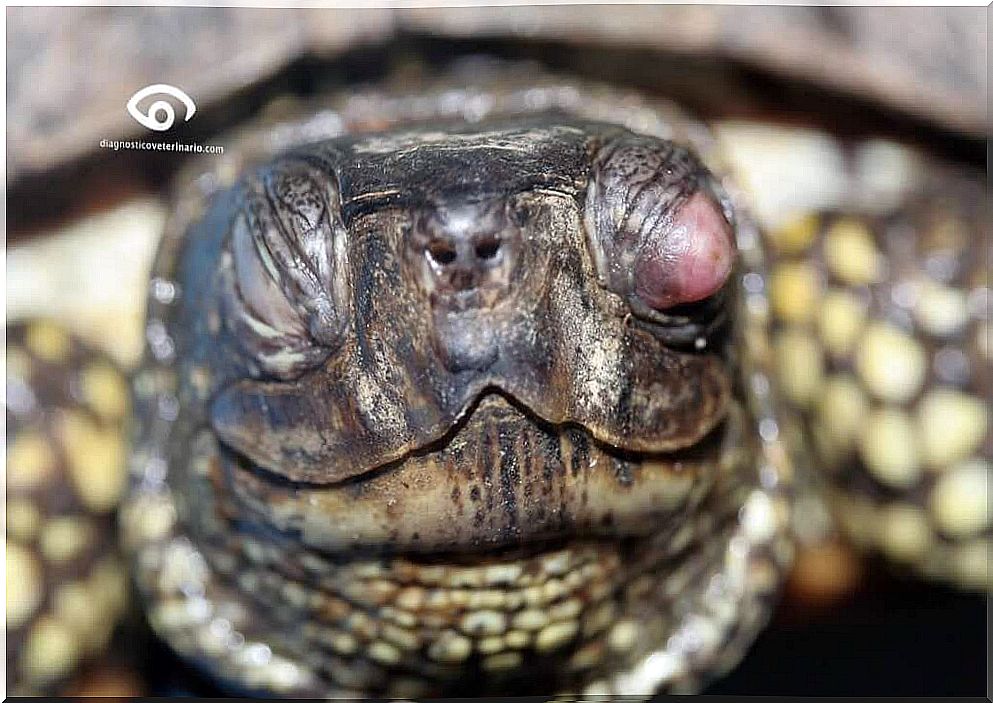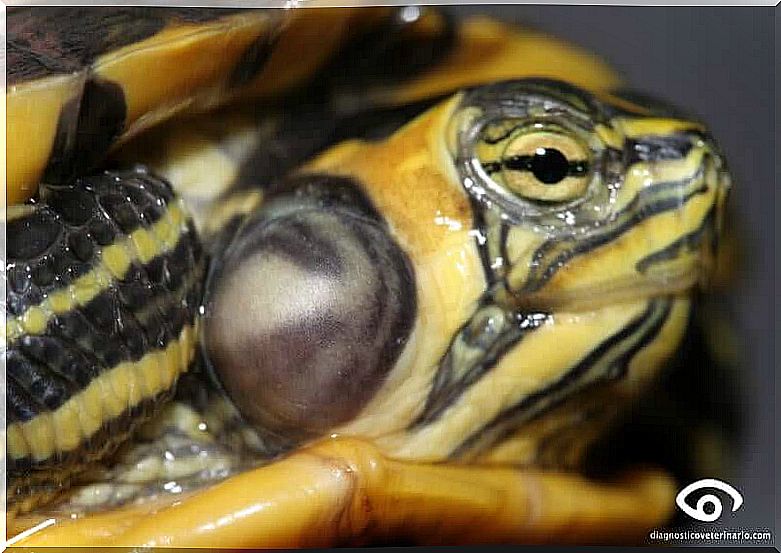The 3 Most Common Health Problems In Domestic Turtles

Turtles are one of the most common exotic pets. Small and easy to care for, they are chosen as pets ahead of dogs and cats. There is increasing knowledge about their care. Do you know what are the most common health problems in domestic turtles? Check out!
The 3 Most Common Health Problems in Domestic Turtles

Hypovitaminosis A
First, the vitamin A is necessary for the good condition of the mucous membranes and skin of animals. It is a vitamin that is not synthesized in the body and, therefore, must be ingested through the diet in the form of beta-carotene or retinol.
Symptomatology
Turtles with hypovitaminosis get swollen eyes, blepharitis, edema, hyperkeratosis of the skin around the eyes, and sometimes scabs. The cornea usually loses its luster and takes on an opaque appearance. In addition, the general condition usually worsens, with signs of apathy, lack of appetite and weight loss.
Symptoms are similar to those of other diseases such as purulent conjunctivitis or corneal ulcer. To differentiate them, complementary exams must be performed at the veterinary clinic.
Diagnosis and treatment
To ensure the diagnosis, it is necessary to seek a positive response to treatment with intramuscular injections of vitamin A given every 15 days. In addition, eye symptoms will be treated by cleaning the eyes and applying an eye ointment.
Finally, the most important thing will be a change in diet. It is necessary to feed the turtle a specific food fortified with vitamin A or follow a strict natural diet – although this is always more complicated because the right ingredients are not always available at home.
It is recommended, in the case of carnivorous species, the addition of a few pieces of crushed liver to the weekly menu. If it is a herbivorous turtle, orange, red and yellow fruits and vegetables should be added.

Otitis in domestic turtles
The causes of otitis in turtles are varied:
- Inappropriate hibernations that cause immunosuppression.
- Infections in the mouth or pharynx.
- Ear area trauma.
- Hypovitaminosis A.
Generally, the diet is not suitable either, especially for carnivorous species, being low in vitamins.
Symptomatology

First, the tympanic region is greatly enlarged, forming a lump on one side of the head – or both, if both are affected. On palpation, it is perceived as hardened and with an increase in temperature.
When opening the turtle’s oral cavity and squeezing the nodule, we see that the mouth fills with a dense, whitish secretion, usually purulent. This last data, at first, should allow differentiating the diagnosis of a possible tumor.
Second, the animal is usually lethargic and often loses its appetite.
Diagnosis and treatment
To confirm the diagnosis, it is suggested that an x-ray be taken to assess the middle and inner ear to see if they are affected, as well as a blood test. Once the diagnosis is confirmed, surgery to remove the abscess should be performed and antibiotic treatment prescribed for 10 days.
Cloacal prolapse, one of the most common health problems in domestic turtles
Cloacal prolapses are relatively frequent pathologies in reptiles. Its causes can be very diverse:
- Hypocalcaemia.
- Gastroenteritis.
- Hyperphosphatemia.
- Intestinal parasites.
- Presence of foreign body.
Diagnosing several of these causes requires certain additional tests – such as stool analysis – that cannot be performed in the case of a prolapse. Thus, it will be necessary to establish observation of symptoms to determine the resolution of the problem.
Symptomatology
First, the cloaca is outside its orifice, swollen and swollen. This discomfort causes the animal to lose its appetite, become dehydrated, do not defecate and appear to be in poor condition.

Treatment
First, treatment will begin by trying to reduce the inflammation of the cloaca by applying ice packs to the affected tissue. Once this is done, with the animal anesthetized, the prolapse is reintroduced through the anus, lubricating the cloaca well, and a few stitches are given to prevent it from happening again.
Final grade
There are several diseases that can often affect the health of domestic turtles, so it is important to know them and be aware of the first symptoms. Undoubtedly, the ideal is always to apply a good prevention strategy to ensure the animal’s well-being.








